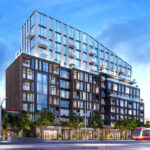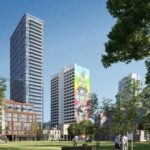When looking at the 2018 sales of over 130 downtown Toronto Condos, the average market turnover is 6.35%, but this number doesn’t tell the whole story.
Condo turnover relies greatly on several factors, including age, region, demographics, size, and others. We’re going to be analyzing the facts and figures behind turnover for new condo development projects in Toronto and the GTA.
Turnover by Region
The following is a chart showing the average turnover and year of construction of the condos in a region of the GTA.
| Area | Average Turnover | Average Year of Construction |
| Liberty Village | 7.99% | 2011 |
| Regent Park | 7.90% | 2013 |
| Canary District | 7.50% | 2016 |
| Entertainment District | 7.25% | 2012 |
| Fort York | 6.55% | 2012 |
| King West | 6.47% | 2007 |
| St. Lawrence Market | 6.24% | 2004 |
| CityPlace | 5.55% | 2008 |
| Waterfront | 4.00% | 1997 |
What exactly causes the differences among these rates?
The Impact of Price
We can’t pinpoint how price affects the turnover rate for these regional condos. Liberty Village, which has the highest turnover, generally has the lowest prices when it comes to the condo market, and retail investment is common in the area.
At the same time, CityPlace and Fort York both have relatively low prices as well, and their turnover rates are considerably higher. It seems that price isn’t a major factor in turnover.
The Other Factors
We can discern 3 major trends from 2018’s condo turnover statistics.
- Newer condos have higher turnover on average. Buildings built in the 1900s had an average turnover of under 4%, while those built in the new millennium had well above 4% The turnover rate rises steadily from 4.69% to 9.18% for new condo development projects built from 2000 to the current year respectively.
- Smaller buildings with fewer than 100 units had an average turnover of 31%. However, we could not find a correlation between building size and turnover rate once we look at buildings with over 100 units, where the turnover is generally above 6%.
- In contrast to the housing market, the condo market attracts more first-time buyers thanks to lower As a result, the main demographic for condos is the younger crowd in their mid-to-late-20s. Since young people tend to move out of condos and into houses later in life, especially after starting a family, the demographic for condos may explain the turnover rates.
New Condo Projects Featured by TOmycity | Toronto & the GTA | Exclusive Newsletter
Are you researching new condo development projects in Toronto and the GTA? Factors like turnover rate, demographic, and price are all useful metrics whether you’re participating in the market directly or investing in certain condos to sell for profit later.
One resource you might be interested in is the Tomycity newsletter, an exclusive source for information on new condo development projects throughout Toronto. Gain early access into downtown projects well before they go live with TOmycity.
- The market for new condo development projects in Toronto and the GTA is large and complex. Several factors affect the price, sales, and general activity of condos sold in the region.
- Turnover rates for downtown condos change considerably from region to region and can vary thanks to the building’s age, size, and sales demographic.
- Condos are still a popular housing option in Toronto and the GTA.
Are you looking for more exclusive access to valuable information regarding condo projects in Toronto and the GTA? If so, make sure to subscribe to the Tomycity newsletter.










